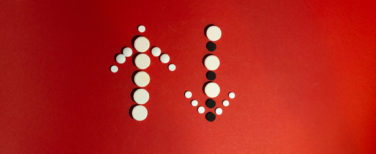As local and national governments continue to explore ways to stop the spread of COVID-19, self-reported symptom data is offering valuable, near-real-time insights to inform public health decision-making.
Regions that have adopted predictive machine learning technology to collect data from individuals on a daily basis can gain visibility into emerging disease hotspots, allowing leaders to tighten or lift social restrictions accordingly. These “breathing lockdowns,” which may become part of society’s new normal, can help communities avoid unnecessary economic and social stress while allowing healthcare systems to prepare for predicted surges in COVID-19 patients.
In March of 2020, the Israeli Ministry of Health took proactive steps to integrate self-reported symptom data into its national response plan. In conjunction with Israeli HMOs, the Ministry of Health deployed Diagnostic Robotics’ COVID-19 monitoring solution. The solution, which includes a clinical questionnaire to collect self-reported symptom information, generates an epidemiological heat map that assists government officials in identifying appropriate lockdown procedures for areas at risk.
The system also helps individuals monitor and manage their own health. After filling out the questionnaire, users receive recommendations on the best course of action based on their self-reported medical history and their current symptoms. The advice may include self-isolating at home or seeking immediate medical care for more severe symptoms.
Positive Results from Self-Reported Tracking
As a result of this strategy, Israeli public health officials can use more timely data to react to rapidly changing patterns of disease. After the first few weeks of deployment, the Ministry of Health found that it could identify confirmed cases faster and more accurately than with official testing data alone. It also revealed systemic gaps in testing among certain populations that resulted in significant underreporting of the actual incidence of disease.
Adoption has been high, with 25% of citizens accessing the questionnaire within the first few weeks of deployment. Of the users who chose to participate, 80% finished the questionnaire to submission.
The solution’s emphasis on privacy has likely contributed to broad uptake. The symptom checker uses public location data to create geographic heatmaps but does not collect private information or personal details from individual users. All health information is voluntarily self-reported, giving individuals control over their involvement in the public health response.
Israel’s success thus far in controlling the virus shows that officials can indeed balance individual data privacy concerns with the need for detailed visibility into disease patterns. The country has one of the lowest death rates per 100,000 residents among the world’s most affected regions and is currently easing lockdown restrictions in many areas while continuing to carefully monitor signs of new outbreaks.
In the United States, Rhode Island is the first state to take a similarly data-driven approach.
Despite being sandwiched between the hardest-hit states in the country, Rhode Island has managed to keep its death rates lower than its neighbors thanks to an aggressive, digitally savvy public health response. Collecting self-reported symptom information and sharing clear, actionable health advice for individuals showing signs of COVID-19 is helping to support the state’s decision-making as deploys its multi-phased opening plans.
The ongoing use of self-reported symptom tracking technology will be key for regional and national governments as they work to combat the virus and reopen their communities while maintaining the privacy and well-being of their citizens. When used as part of a coordinated, comprehensive public health program, these tools can play a vital role in helping officials stay one step ahead of this challenging and unprecedented disease.







